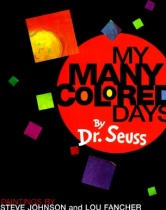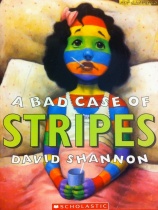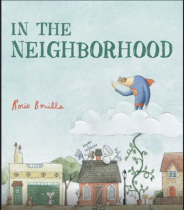This week was an abbreviated week at Summerbridge due to the extended Fourth of July weekend. At this point I am a bit sleep deprived, but classes went well, and I am beginning to know my students better every day. This week we worked on the color-coding stoplight method that is used to understand and identify the parts of a solid expository paragraph. Although I wasn’t ecstatic about this particular lesson, it was a mandatory part of the curriculum so I tried my best to keep a positive attitude. It certainly is amazing how easily a student or a group of students can sense a teacher’s positive or negative mood for a particular day. I realized that when I try my best to remain energetic and understanding, my students do the same.
The stoplight method did go better than I expected due to my positive attitude. I brought in an actual stoplight from home that lights up to make the class more interesting. The one difficulties I encountered when teaching this lesson were due to the subjectivity of the lesson itself. While color-coding a text I had written entitled “School Kill Creativity,” two of my students got into an argument over what should be highlighted in yellow. In the stoplight method, the thesis and the conclusion are highlighted in green, the reasons are highlighted in yellow and the explanations are highlighted in red. Thus, one student felt strongly that two sentences should be highlighted in yellow rather than red. Upon further investigation, I realized they were both right because writing is extremely subjective. Thus, I had to explain to the students that the answer may not always be in black and white. Writing is different than math in that you are not looking for one right answer, but multiple answers to a single question.
The students also spent the remainder of the week focusing on how to paraphrase properly to avoid plagiarism. It was during this particular lesson that I realized I don’t have to be so uptight when I am teaching. Rather, I need to find a balance between having excellent classroom management while also allowing my fun personality to shine through. During my paraphrasing lesson, I had the students look at the paragraph I had written on the smart board and then paraphrase the paragraph using their white boards. One of the students wrote down such a ridiculous answer that I laughed so hard until I cried. Soon, the entire class was laughing. Although we wasted three minutes laughing, I realized it wasn’t a waste, but a gift. The students looked at me differently after that episode. They saw me as human, and I had been able to connect with them on a deeper level. Recently, my mentor teacher had encouraged me to start using the white boards as a way to check for understanding. Not only were the white boards a valuable tool for me, but they allowed the students to personally express themselves within the classroom.
There were a couple of very important lesson I learned this second week that are worthy of documentation. The first lesson I learned was that less is sometimes more. I had a long talk with my mentor teacher over the Fourth of July weekend, and she suggested that I would save a lot of time in the classroom if I eliminated some of the “fluff.” For example, on my last day before the long weekend, I had decided to write a review lesson of everything we had accomplished in the past two weeks. I wrote a great article that the students enjoyed reading and they were then asked to put this information into a t-table format. However, I also decided to end the class with a paraphrasing game where the top two paraphrase champions could win patriotic sunglasses. I was trying to make this lesson so creative that I wasted five minutes or more just discussing prizes. Although this was a good idea in theory, I realized I needed to manage my time wisely since only four weeks were remaining in the summer. In other words, I needed to make sure my creativity had a solid purpose.
The second lesson I learned during this second week is that not all of my students will be happy with the material being taught for that particular day. Many of my students complained that they had already learned the stoplight color-coding method method. However, in reality, they had completely forgotten what each color stood for. I also had one particular student who was not afraid to talk back to me in a larger group setting. She would sometimes refuse to do the work that I asked her to do until I threatened to send her to the disciplinary office. Nevertheless, her poor behavior put me in a bad mood and all my other students suffer. Thus, I made the conscious decision to not let her control me. Classroom management certainly takes persistence and a lot of patience. Yet, it is the job of the teacher to stand firm in what he/she believes in.










